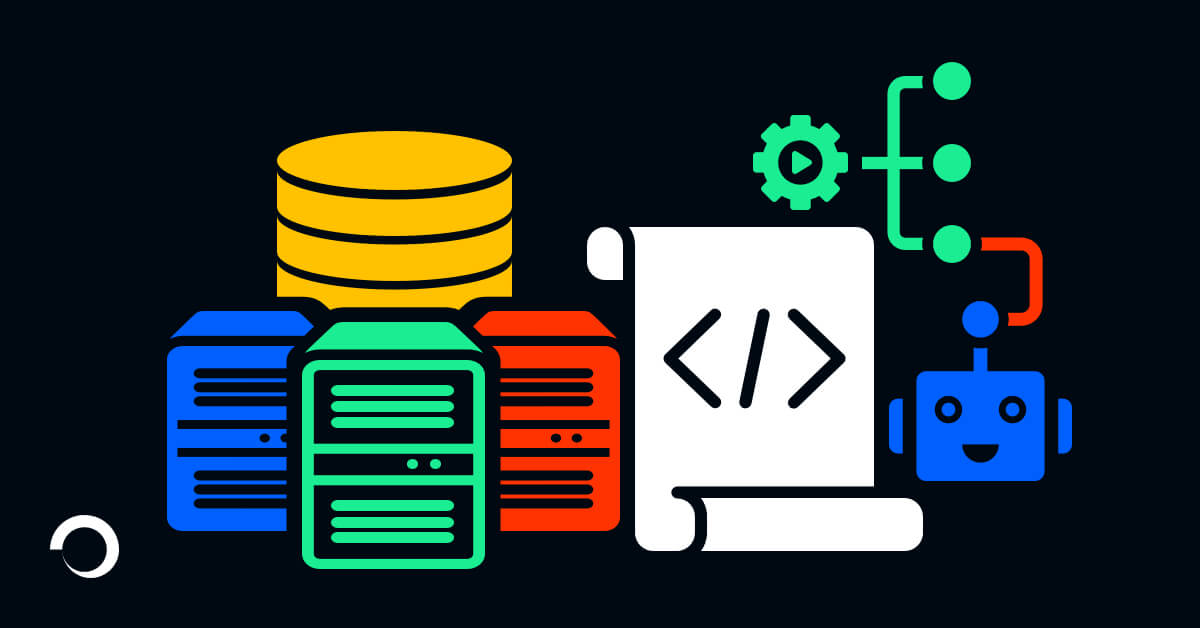What is Infrastructure as Code (IaC)?
Infrastructure as code (IaC) is the process of using software code for resource provisioning in data center and cloud environments, instead of hardware settings or configuration tools, with the benefits of automation and remote provisioning. This article explains the meaning of IaC, how it works, and its top benefits.
What is Infrastructure as Code (IaC)?
Infrastructure as Code (IaC) helps transition infrastructure management from physical hardware in data centers to virtualization, containers, and cloud computing. In IaC, the networks, virtual machines, load balancers, and connection topology are all coded using high-level language to standardize the environments used in application development. Once coded, DevOps can spin up, tear down, and scale infrastructure in response to fluctuating demand. This agility makes software development, testing, and deployment much faster and easier.
Configuration files containing infrastructure specifications are created, making it easy to edit and distribute configurations while ensuring you consistently provide the same environment every time. With IaC, programmers can create sandbox environments so they can build applications in isolation. QA professionals can then take a copy of the same infrastructure to run tests to ensure applications work properly. In the final step, another copy of the infrastructure and code goes to production for deployment.
How does IaC work?
IaC automates infrastructure configuration and tasks, such as resource management and monitoring, to streamline IT operations, create consistency, and provide visibility.
In practice, IaC creates scripts that define desired end states by laying out a series of steps to achieve the preferred end goal or outlining the desired end state. In both cases, the goal is to create repeatable and identical infrastructure environments to minimize overall complexity.

What are the benefits of Infrastructure as Code?
- Cost reduction: Every task done contributes to the heavy financial budget of every building team. Most times, the time taken to complete the task results in high pricing. However, since significant tasks, like time-consuming infrastructure configuration, are automated by IaC, the engineers or IT experts can finish these tasks in no time and focus on other mission-critical tasks. This would help minimize costs from necessary tasks and improve salaries of other functions according to their demands. The team can even decide to save this money for important decisions in the future.
- Speed and efficiency: Automated provisioning and management are faster and more efficient than manual processes. This stretches not just to provisioned resources and virtualization, but also databases, networking, user account management, and other tied-in services. IaC can also include code that automatically scales (adds or shuts down environments and resources when they are no longer needed).
- Low risk of human errors: There are two descriptions of human errors on this benefit. The first is the face meaning which implies mistakes made by engineers or IT personnel in the manual process of infrastructure building. The second side to human error is the adaptation of new employees to the infrastructure built by the former IT expert. IaC solves these two issues as automation reduces the risks of human-made mistakes by cutting down long processes. Also, IaC standardized and logged all processes during the building stage. This creates detailed reports and documentation of how the infrastructure works, how it is managed, and deployed, and how new employees can continue managing without setbacks.
- Improved tracking and accountability: A sometimes-overlooked advantage of IaC files is that they maintain a clear record of any changes. Teams can easily review what changes have been made, when, and (if accountability becomes an issue) by whom. And, because IaC maintains previous versions in an accessible repository, developers can return to previous instances and redeploy earlier environments if problems arise.
-
Eliminate configuration drift: Another critical benefit of infrastructure as code is that it is idempotent. This implies that one can deploy the code many times, with the first deployment being the actual deployment and subsequent deployments having no essential effect. Amongst the many advantages of this idempotency feature, the most striking is how IaC prevents configuration drift. If someone changes a resource, not in sync with your IaC pipeline, you need to correct this and get the resources back to the correct state as fast as possible. But with IaC, the specifications of your environment configuration are already in the code. This implies that the correction happens automatically if the change is implemented.

Why Has Infrastructure as Code Become Important?
Infrastructure as code matters because of three significant trends, all of them happening at the same time.
The transition to the cloud
One trend, of course, is the ongoing transition to the cloud. More and more companies are shifting workloads from on-premises infrastructure to cloud environments. Cloud-based infrastructure is provisioned via APIs, and, as a result, can be easily managed with infrastructure as code tools.
Cloud modernization
The second trend is cloud modernization. After organizations migrate to the cloud, they tend to look for opportunities to maximize the value they get from their cloud environment. This frequently involves adopting technologies such as serverless, containers, and Kubernetes, which, when applied correctly, these technologies enable teams to deliver value more quickly and use managed services to offload some of the heavy lifting to the cloud provider. These technologies and services generally require more granular management of infrastructure. Stitching together all the primitives that the cloud provider offers into solutions that serve the business is a great fit for infrastructure as code.
Frequent infrastructure changes
Finally, the rate at which a company’s infrastructure changes is increasing. Cloud adoption and cloud modernization are two of the reasons this is happening. The third is that organizations are finding that they can move faster if they take advantage of the fundamental elasticity of the cloud.
For teams managing tens or hundreds of cloud resources that change once every few months, it may still be possible to manage infrastructure with point-and-click or scripts. But the more common situation today is that teams are managing thousands or tens of thousands of resources that change daily or even hourly. Infrastructure as code is how you take control of that kind of complexity.
Choosing the right IaC tools for your needs
Infrastructure-as-code tools are designed to further simplify the process of configuring and modifying infrastructure. They use one of two methods to accomplish a goal: push or pull.
In a push framework, a centralized server sends configuration data to specific systems. In a pull framework, the systems themselves initiate configuration data requests. Most tools default to one method, but organizations can change that as required.
Some popular tools on the market include Chef, Ansible, Terraform, and Puppet. However, the best fit for your IaC deployment depends on your current needs and long-term goals.

Conclusion
Infrastructure as code is a foundational concept in IT, helping infrastructure managers quickly and conveniently provision resources, configure security, and make changes to the landscape from any location. Nearly every cloud environment today, be it AWS, Google, or Microsoft Azure, supports the use of IaC via their respective resource management interfaces.